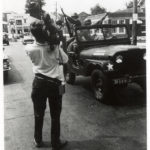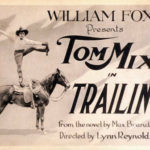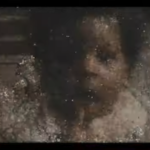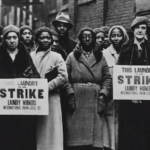More from Wunderkino 2013 – Hunt’n n Fish’n
Some of the earliest films were of a combative nature – there were boxing films, train-robbery films, and – as one of the most accomplished of early-film historians, Paul Spehr, described at this year’s Wunderkino, a gathering run by Northeast Historic Film in Bucksport, Maine – films pitched at hunters and fishermen.
Here’s Paul Spehr’s summary of the presentation on hunting and fishing that he gave at Wunderkino. Spehr is a former assistant chief of the Motion Picture, Broadcasting, and Recorded Sound Division at the Library of Congress.
A Sporting Life – on Film: Hunting and Fishing in New England, Shown at Boston’s Sportsmen’s Show in 1905

The American Mutoscope & Biograph Company made them, and G. W. “Billy” Bitzer, the company’s leading cameraman, filmed them. Frank Marion directed them.
The films featured well-known sportsmen from the New England Forest, Fish, and Game Association. While sports films were not unique, these were unusual because of their length and purpose. Instead of lasting a minute or less, they ran as long as ten minutes and rather than show a spectator’s perspective, they were intended to involve the spectator in the action. They transported the would-be sports person to an exotic locale and tried to make the viewer a participant.
The American Mutoscope & Biograph Company enjoyed a special relationship with New England audiences. Their large format, 68mm films had been a prominent feature of B. F. Keith’s New Theatre, Boston’s leading variety house. Films of local activities in New England had been a special feature of the programming at Keith’s houses and at other theaters in New England. Blitzer, who was a New Englander, filmed many of them. As the public’s taste for spectacle changed in the years after 1900, the Biograph company tried to diversify its production and had particular success producing films for the World’s Fairs in Paris, Buffalo, and St. Louis which were features of the early years of the new century. Their experience making films for exhibitors at these fairs gave the company experience that suited the exhibit in Boston. The Sportsman’s Show came at a time when movies were evolving. The public’s taste for the short films that suited the variety show at Keith’s theater had changed. Longer films that began to tell stories were replacing the kaleidoscope of short films that entertain the audiences in Variety houses.
The Biograph Company ventured cautiously into longer story films, but, as these six films show, by 1905 they were able to apply production experience to films of documentation and instruction. Two of the films, Trout Fishing and Moose Hunt, show careful planning involving a pre-production story line, careful camera placement, and post-production editing. While the production values are not unusual, they are remarkable in this pre-Griffith era.
 Paul C. Spehr is a retired Assistant Chief of the Motion Picture, Broadcasting, and Recorded Sound Division at the US Library of Congress. He continues to research and revive interest in the first years of film history. Among his publications is his compilation American Film Personnel and Company Credits, 1908-1920 (McFarland & Company, 1996) and his biography of a seminal film pioneer, The Man Who Made Movies: W. K. L. Dickson (John Libby Publishing, 2008).
Paul C. Spehr is a retired Assistant Chief of the Motion Picture, Broadcasting, and Recorded Sound Division at the US Library of Congress. He continues to research and revive interest in the first years of film history. Among his publications is his compilation American Film Personnel and Company Credits, 1908-1920 (McFarland & Company, 1996) and his biography of a seminal film pioneer, The Man Who Made Movies: W. K. L. Dickson (John Libby Publishing, 2008).
Previous Post: Wunderkino 2013 – What You May Have Missed





